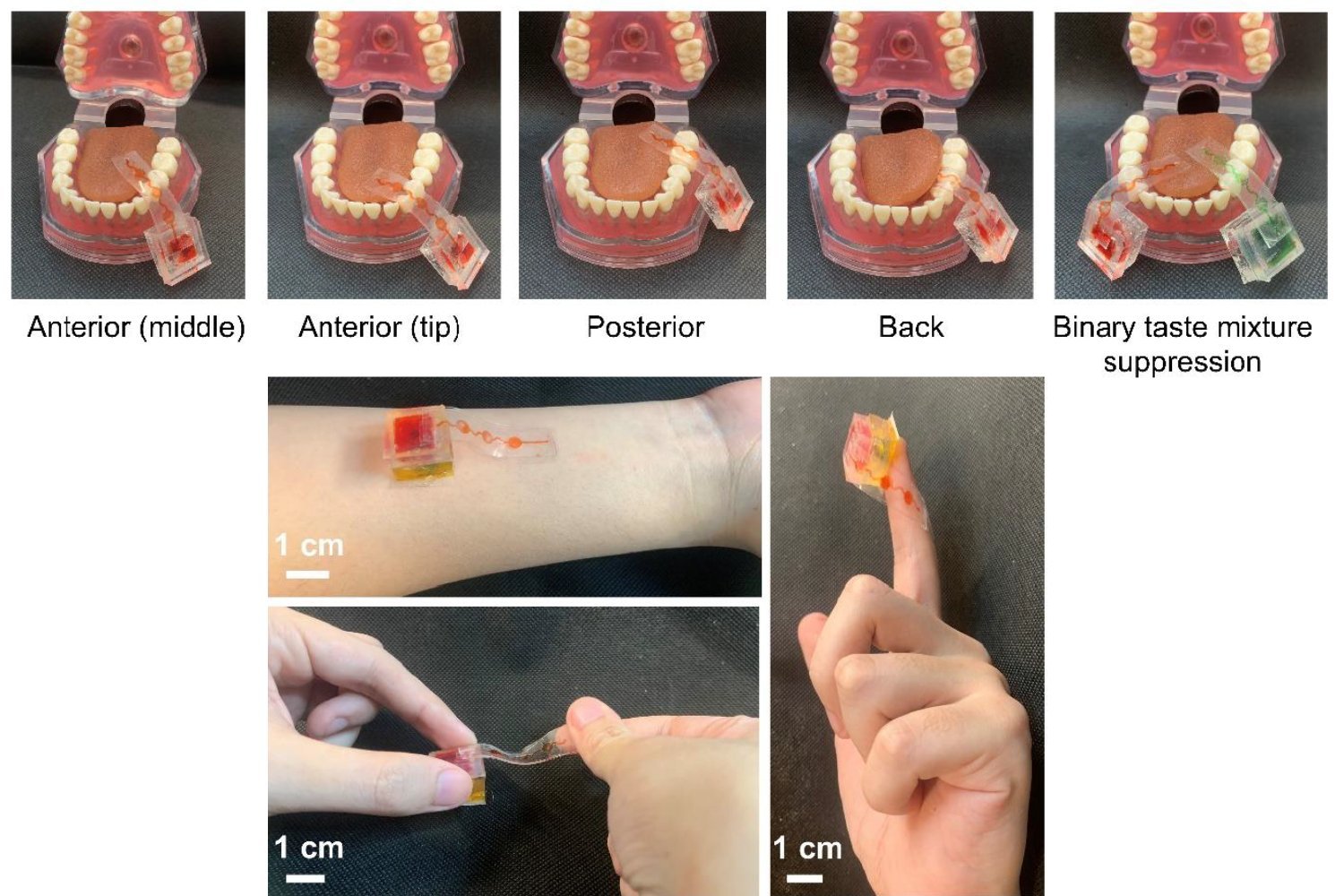
The Dawn of Digital Delights: Researchers Develop e-Taste, a Virtual Flavor Device
Imagine a world where your virtual reality experience extends beyond sight and sound, reaching into the realm of taste. Picture yourself exploring a digital marketplace, sampling exotic fruits from distant lands without ever leaving your home. Envision a future where weight management is aided by virtual indulgence, allowing you to savor the flavors of decadent desserts without the caloric consequences. This future might be closer than you think, thanks to a groundbreaking new technology called e-Taste.
Researchers from around the globe have achieved a significant breakthrough in human-machine interfaces with the creation of e-Taste, a device capable of delivering virtual flavors directly to the user’s tongue. This innovative technology promises to revolutionize a wide range of applications, from enhancing video games to providing personalized culinary experiences.
The e-Taste device, detailed in a study published in the prestigious journal Science Advances, is a small, discreet apparatus that rests on the user’s lower teeth. From this position, a small tab extends towards the tongue, acting as a conduit for delivering precise doses of flavor-inducing chemicals. These chemicals, carefully selected to mimic the fundamental tastes, include NaCl (salt) for salty sensations, citric acid for sourness, glucose for sweetness, MgCl2 (a bitter salt) for bitterness, and glutamate for the savory umami flavor.
The magic behind e-Taste lies in its ability to coordinate the delivery of these chemicals with remote stimuli. An electromagnetic pump, controlled by an "Internet of Things" approach, precisely regulates the release of each flavor compound, ensuring a seamless and synchronized virtual tasting experience. This intricate system allows users to taste virtual flavors in response to on-screen events, enhancing immersion in video games, educational simulations, and more.
According to a statement from the American Association for the Advancement of Science, taste has long been considered one of the most challenging senses to simulate in virtual and augmented reality. However, the e-Taste device has proven remarkably effective in overcoming this hurdle. In a study involving sixteen human participants, the device successfully reproduced a wide range of tastes, including complex flavor combinations found in dishes like chicken soup. Furthermore, the researchers demonstrated the ability to control the intensity of the delivered tastes, allowing for nuanced and realistic virtual culinary experiences.
The researchers emphasized the device’s safety, versatility, and tunability. They also designed it to withstand the rigors of daily use, ensuring it is resistant to damage from biting or other accidental impacts. This robust design is crucial, given that the device is intended to be worn comfortably in the mouth for extended periods.
The potential applications of e-Taste are vast and diverse, spanning across numerous industries and sectors. The research team, led by engineer Shulin Chen from the Ohio State University, envisions the device playing a significant role in immersive gaming, online shopping, remote education, weight management, sensory testing, and physical rehabilitation.
Imagine, for example, the enhanced level of engagement that e-Taste could bring to video games. Players could experience the flavors of different environments, such as the salty tang of the ocean in a pirate adventure or the smoky taste of a campfire in a wilderness survival game. In online shopping, e-Taste could revolutionize the way consumers interact with food products. Instead of relying solely on descriptions and images, shoppers could virtually sample items before making a purchase, ensuring satisfaction and reducing the likelihood of returns.
In the realm of education, e-Taste could provide students with a more immersive and engaging learning experience. Students studying culinary arts could practice their skills in a virtual kitchen, experimenting with different flavor combinations without wasting ingredients. History students could even sample the foods eaten by people in different time periods, gaining a deeper understanding of their culture and lifestyle.
One of the most compelling applications of e-Taste lies in the field of weight management. By allowing individuals to virtually indulge in their favorite treats without consuming any calories, the device could help curb cravings and promote healthier eating habits. Imagine savoring the taste of a rich chocolate cake or a creamy ice cream sundae, all without the guilt or the consequences for your waistline.
Moreover, e-Taste could prove invaluable in sensory testing, providing a more objective and reliable method for evaluating the taste of food products. By eliminating the potential for bias introduced by human tasters, the device could help food manufacturers develop new and improved products that better meet consumer preferences. In physical rehabilitation, e-Taste could assist individuals who have lost their sense of taste due to injury or illness. By stimulating the taste buds with virtual flavors, the device could help them regain their ability to enjoy food and improve their overall quality of life.
The researchers also suggest that e-Taste could revolutionize the way we dine. Consider the simple act of ordering food at a restaurant. While some establishments offer samples of certain items, such as ice cream, it is often impossible to try more complex dishes like steak or pasta before committing to a purchase. E-Taste could bridge this gap, allowing diners to virtually sample dishes before ordering, ensuring they make the perfect choice.
While the initial study focused on the fundamental tastes, future research could explore the possibility of simulating more complex and nuanced flavors. By combining different chemical compounds and manipulating their concentrations, researchers could potentially recreate a vast array of culinary experiences, from the subtle notes of a fine wine to the bold flavors of a spicy curry.
The development of e-Taste represents a significant step forward in the field of human-machine interfaces. As the technology continues to evolve, it promises to transform the way we interact with the digital world, opening up new possibilities for entertainment, education, healthcare, and beyond. The dawn of digital delights is upon us, and e-Taste is leading the way.
